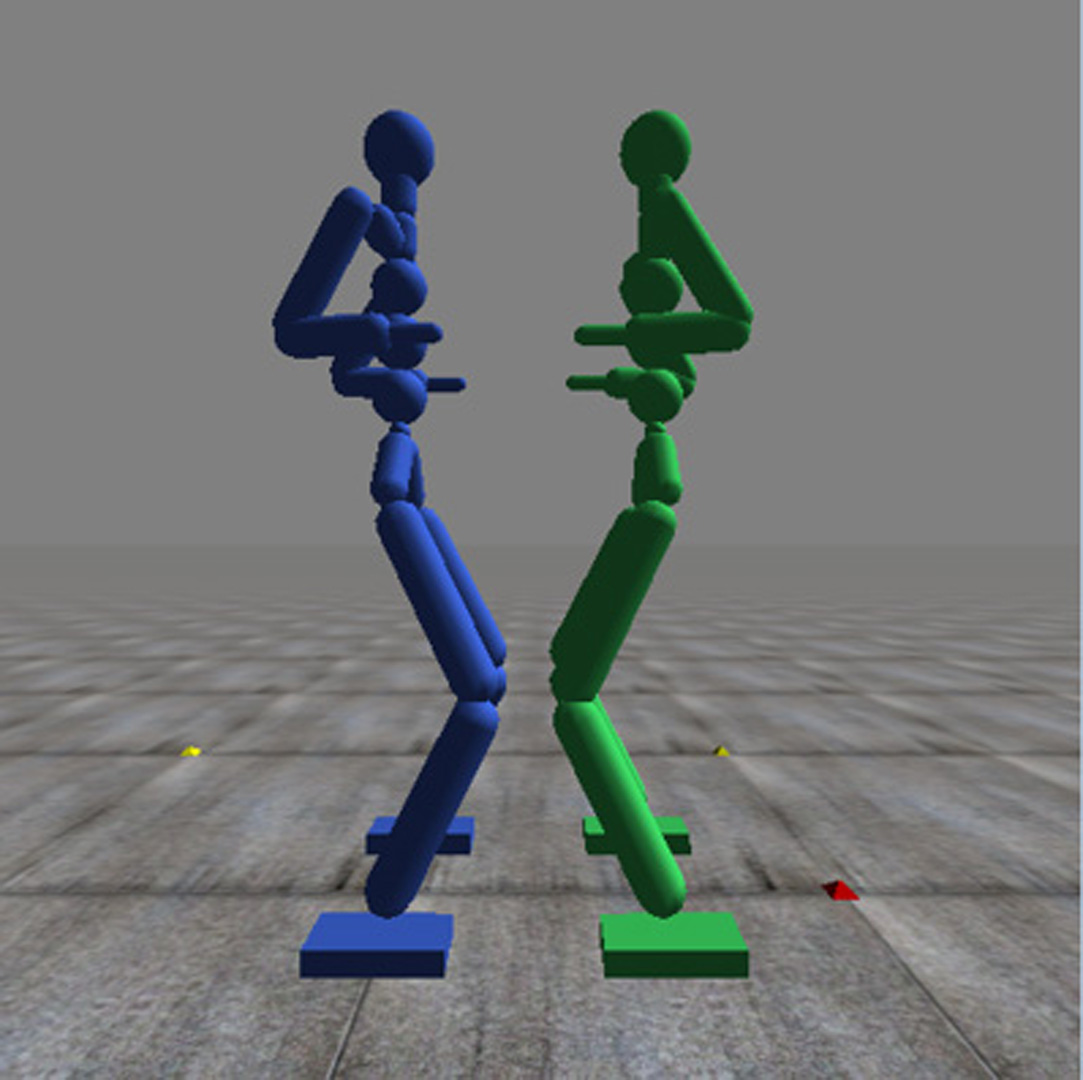“Synthesizing Close Combat Using Sequential Monte Carlo” by Chiang, Lin, Chang and Ouhyoung
Conference:
Type(s):
Entry Number: 55
Title:
- Synthesizing Close Combat Using Sequential Monte Carlo
Presenter(s)/Author(s):
Abstract:
Synthesizing competitive interactions between two avatars in a physics-based simulation remains challenging. Most previous works rely on reusing motion capture data. They also need an of- fline preprocessing step to either build motion graphs or perform motion analysis. On the other hand, an online motion synthesis al- gorithm [H¨am¨al¨ainen et al. 2014] can produce physically plausible motions including balance recovery and dodge projectiles without prior data. They use a kd-tree sequential Monte Carlo sampler to optimize the joint angle trajectories. We extend their approach and propose a new objective function to create two-character animations in a close-range combat. The principles of attack and defense are designed according to fundamental theory of Chinese martial arts. Instead of following a series of fixed Kung Fu forms, our method gives 3D avatars the freedom to explore diverse movements and through pruning can finally evolve an optimal way for fighting.
Additional Images:

Acknowledgements:
This project is partially funded by MOST 103-2622-E-002-034 (MediaTek Inc.), and MOST 103-2221-E-002-171-MY2 (Taiwan). We also thank Digimax Inc. for providing many practical ideas.






